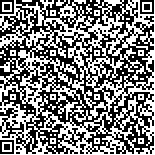下载中心
优秀审稿专家
优秀论文
相关链接
摘要

由地震活动引起的电离层扰动,在前兆现象中存在着震前空间等离子体参数的变化。电磁监测试验卫星设计研制的星载朗缪尔探针载荷,可以实现对空间等离子体电子密度、电子温度等参数的测量。该载荷采用优化的球形传感器,消除了其结构与支撑杆连接处的终端效应,性能指标达到国际同类仪器的先进水平。并通过在意大利国家天体物理研究院行星际物理研究所(INAF-IAPS)的地面等离子体环境下的测试,验证了该载荷在空间应用的可行性和正确性。星载朗缪尔探针载荷在中国电磁监测试验卫星任务中得到应用,为探索大地震短临预测与预警新方法提供空间观测数据,为中国地震立体观测体系的建立提供技术支撑。
Seismic ionospheric disturbance research shows that ionospheric change caused by seismic activity exists in seismic ionospheric precursory phenomena of space plasma change before an earthquake. For example, the electronic total content (TEC), electron density (Ne), ion density (Ni), electron temperature (Te), and ion temperature (Ti) are abnormal. Therefore, monitoring earthquakes and providing an early warning is feasible by measuring pre-earthquake plasma changes. The Langmuir probe effectively detects space plasma and can be used to measure parameters such as electron density and electron temperature. The feasibility of the Langmuir probe in seismic remote sensing observation is studied based on the mission of the China seismo-electromagnetic satellite.
The Langmuir probe payload consists of three parts: a sensor, an extension rod, and an electronics box. The sensor has a spherical configuration; its upper hemisphere is a collecting electrode, and its lower hemisphere is a protective electrode. The same sweep voltage is applied to the upper and lower hemispheres to eliminate the terminal effect of the connecting point between the traditional spherical structure and the boom. The sensor surface is coated with TiN material to ensure uniform surface work function and to prevent space atomic oxygen erosion. The Langmuir probe is designed with two sensors, each of which is redundant.
The plasma environment calibration test of the Langmuir probe flight model was conducted in INAF-IAPS. The test method measures the electron density and temperature at six different distances from the plasma source and compares the results with the measured results of the INAF-IAPS reference Langmuir probe. The calibration test result shows that the Langmuir probe test data are consistent with the test data of the INAF-IAPS reference Langmuir probe. Thus, the design of the Langmuir probe can achieve the missions of the satellite.
The scientific data of the Langmuir probe include level 0, level 1, and level 2 data. The interference is removed from the raw data, the error is corrected, and repetition is eliminated to generate level 0 data. The level 0 data are revised by calibration parameters to produce level 1 data, which are preliminary physical data. The level 2 data are the final physical data, which contain geographic and geomagnetic coordinates, satellite time, space position, and satellite attitude information.
With the launch of the China seismo-electromagnetic satellite, the Langmuir probe is applied for the first time in the field of earthquake remote sensing observation in China. The electron density and temperature are obtained by the Langmuir probe, and the ion density and temperature are obtained by a plasma analyzer. Other space electromagnetic information is obtained by an electric field instrument and a magnetometer. These data are studied synthetically to provide a new method for seismic stereoscopic observation and exploration for early earthquake prediction.

